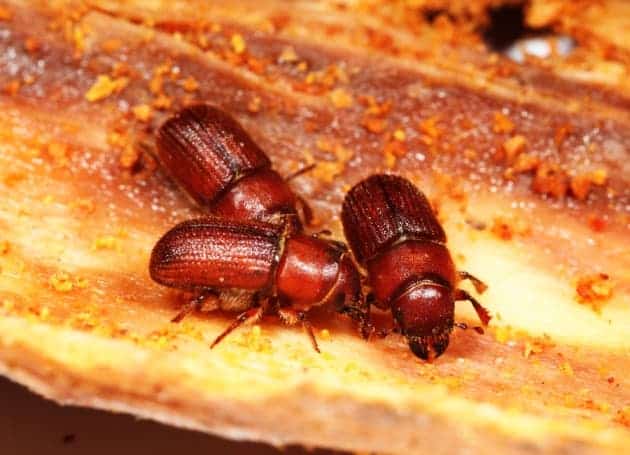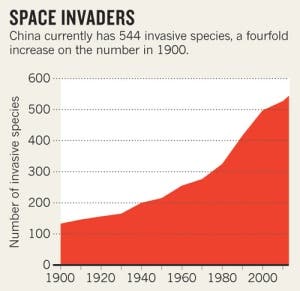Alien species
When China opened its borders to international trade, a new age dawned in the country, making them arguably the most powerful economy in the world today. But along with the new technologies and markets that came with this, alien organisms also infiltrated the country. No less than 550 non-native species, from viruses to bugs, fish and mammals, have become invasive in the country, causing estimated losses of $15 billion / year.

“As the volume of international trade has grown exponentially, so has the number of alien species,” said Li Bo, director of the Office for Management of Alien Species in the Ministry of Agriculture, Beijing, at the second International Congress on Biological Invasions in Qingdao last month.
Since 2000, China has started to improve and tighten its regulations, imposing stricter quarantine regions and limiting the import of plant materials, investing more and more in the research and monitoring of invasive mechanisms. Wan Fanghao, an ecologist at the Chinese Academy of Agricultural Sciences’ Institute of Plant Protection in Beijing is currently finalizing a decade-long project funded by the Ministry of Science and Technology to study invasive species in agriculture and forestry. As he explains, this is a problem that is here to stay:
“With climate warming, increasing international trade and rapid urbanization, the problem of biological invasions will only get worse,” he says. “We need to keep a close eye on potential troublemakers.”

But with the current admnistrative situation in China, it’s pretty hard to keep things under control; one of the biggest problems is rubbish. Waste disposal is a huge deal in China, and many alien species enter China by piggybacking on imports from other countries. But authorities are throwing the responsibility from one ministry to the other, so it’s almost impossible to take effective measures. That’s the thing with invasive species – it’s often impossible to say that they affect Agriculture, or the Environment, or Health, or whatever – it takes joint efforts from more than one ministry.
“There needs to be better coordination and more data sharing between them,” says Sun.
A global problem
The thing is, what happens in China is no longer just China’s problem – it’s global. Since China is the world’s no. 1 exporter, biological invasions are a 2 way street, explains Helen Roy, an ecological entomologist at the Centre for Ecology and Hydrology in Wallingford, UK. Many of the most dangerous pests in the US and Europe come from China.
When dealing with invasive species, international collaboration is extremely important – but so far, despite all the efforts, the invasive species seem to have the upper hand, and no large-scale solution is in sight.


